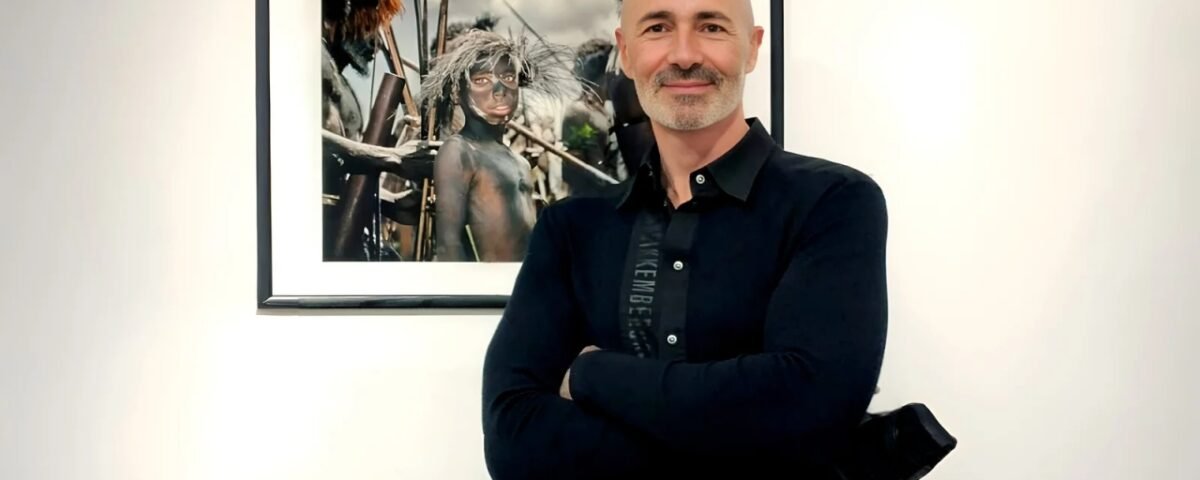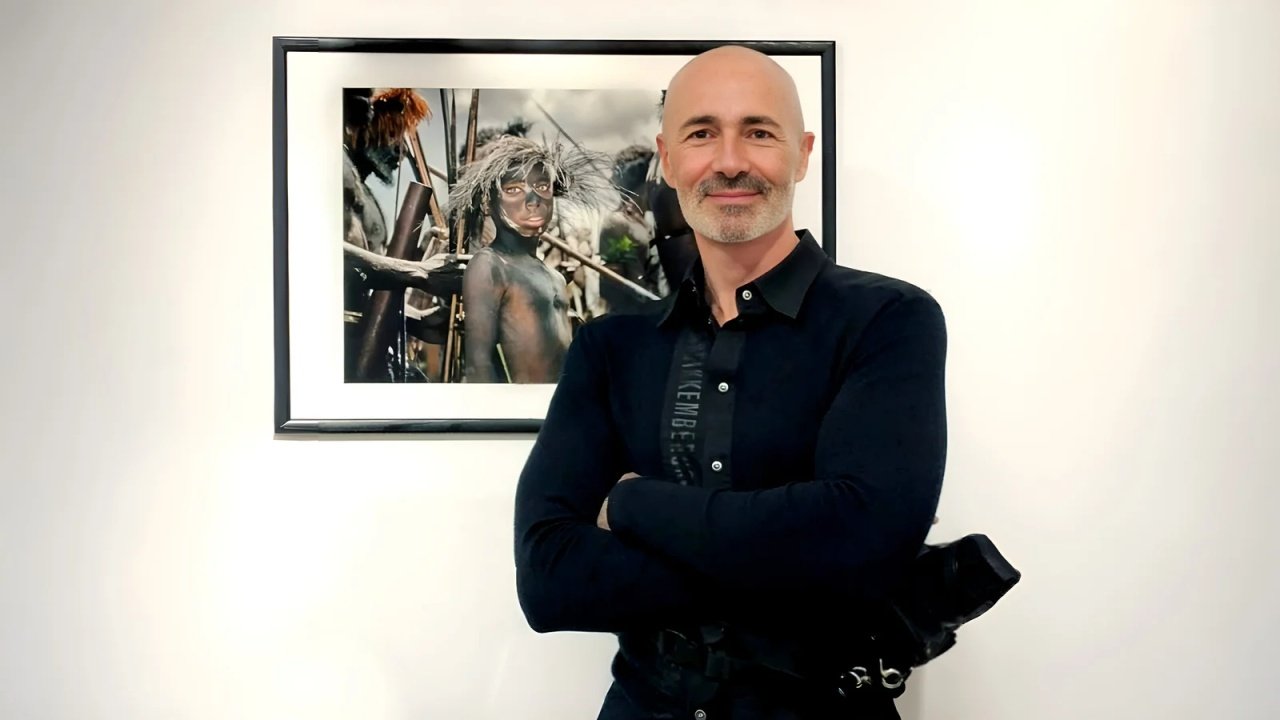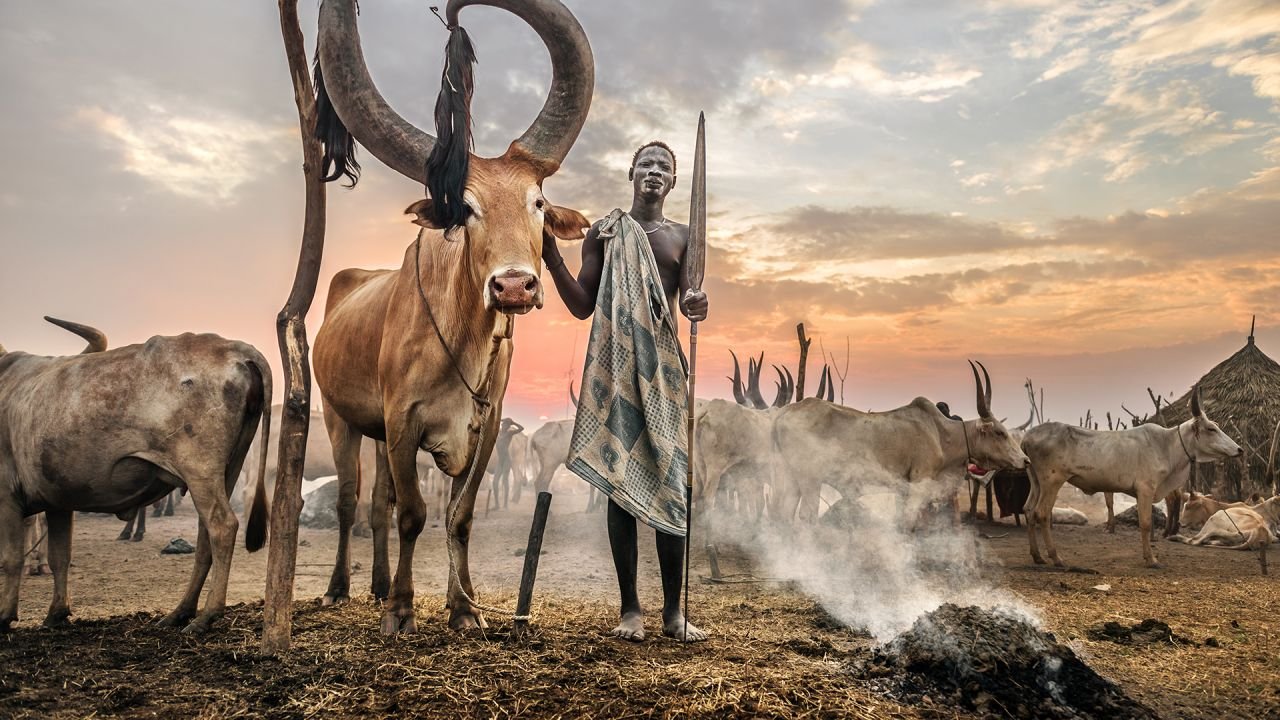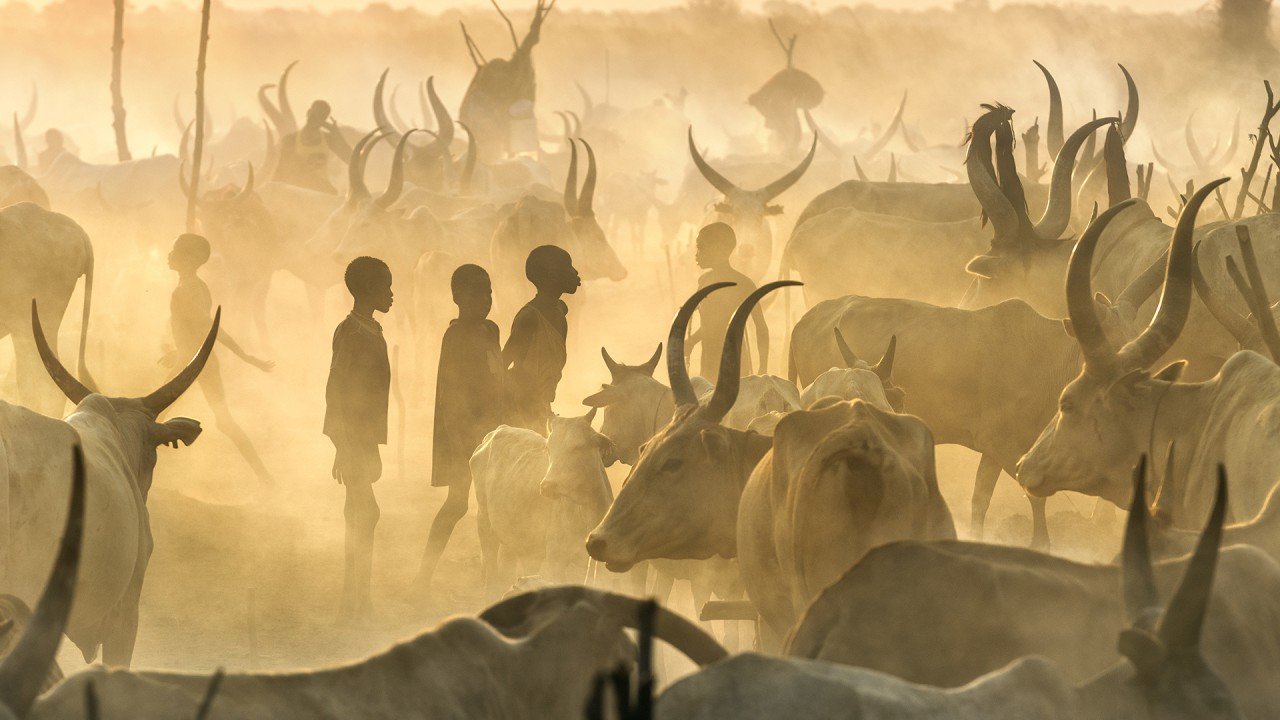
The St. Regis Residences, Boston: A Landmark of Luxury & Architectural Precision
July 18, 2025
Where Passion Meets Play: Adam Sblendorio’s 20-Year Journey in Tabletop Games
July 21, 2025Roberto Pazzi
Italian-born photographer Roberto Pazzi captures the beauty and fragility of disappearing cultures, having devoted his life since 2013 to immersive, long-form travel photography. With each expedition, he transforms observation into homage, turning remote human stories into lasting visual archives.
Born in 1973 in Italy and trained as an engineer, I only discovered my true passions — travelling and photographing remote cultures — in 2013. From a very young age, I saw myself as a backpacker, but the desire to document and capture my experiences and emotions emerged much later.
My first experience as an amateur travel photographer took place in Indonesia, where I worked on a reportage about the Dani ethnic group, who live in relative isolation in the highlands of West Papua and were only brought to wider attention around 1938. That series of images gained significant visibility, particularly in the UK press, and marked the beginning of my career.
A couple of years later, I left my job and relocated from Italy to Spain, where I opened my own gallery. During that period, I also began collaborating with other galleries in Singapore and Brazil. That was the first time I realised my dream could actually come true.
In 2018, I launched my own business, organising and leading photographic expeditions to remote cultures. This experience was deeply enriching and helped me better understand the path I wanted to pursue. Unfortunately, in 2020, the pandemic hit my business hard, forcing me to suspend all travel activities.
On the positive side, I suddenly had a great deal of free time, which I chose to invest in improving my photography skills and participating in photo competitions. The awards I earned helped strengthen my reputation as a professional photographer and expanded my visibility.
Finally, in 2021, I partnered with Nomad Photo Expeditions to organise and lead photographic journeys — an activity that continues successfully to this day.
The award-winning photos are part of a reportage on the Mundari tribe. The Mundari are cattle herders who live in symbiosis with their Ankole-Watusi cattle, known for their strikingly large horns. They use ash from dung fires to rub on themselves and their cattle, providing protection against mosquitoes. The Mundari also massage their cattle twice a day.
The men often squat beneath streams of cow urine, which they regard as a natural antiseptic to prevent infections and maintain hygiene. This practice also stains their hair a vivid orange.
In the cattle camps, everyone plays a role. Children carry out much of the daily labour, collecting fresh cow dung and piling it up to be burned — the smoke helps repel the area's abundant and voracious mosquitoes.
During the day, the men lead the cattle into the fields, where the animals disperse from the banks of the White Nile into the grasses of the alluvial floodplain.
By dusk, the cattle instinctively return before sunset, when the dust raised by the herd mixes with the smoke of the fires to create an evocative, almost otherworldly atmosphere.
At night, the children, along with a few guardians, sleep among the cattle. The ash from the dung fires, as fine as talcum powder, is often used as bedding.
For fifteen years, I built my career in the field of Information and Communication Technologies. I held a prestigious, well-compensated position, complete with numerous benefits and a clearly defined, socially recognised role. Yet, despite these achievements, something essential was missing: happiness.
This profound sense of incompleteness led me to embark on an inner journey, questioning myself deeply to uncover what could truly fulfil me. I was searching for what I wanted to do, rather than continuing a life shaped by what I had to do. The answer soon became clear: travel and photography.
I particularly enjoy travel and documentary photography. I am deeply drawn to capturing cultures, traditions, and customs, yet I always strive to share my personal vision and interpretation, both in the act of photographing and in the subsequent editing process.
I see my passion for travel and photography as a journey through the timeless richness and delicate fragility of our shared human heritage, shaped by traditions and cultures that are often at risk of fading away.
In capturing the essence of some of the world’s most remote communities, I aim to pay tribute to the extraordinary beauty of human diversity. My work seeks not only to honour the resilience of these communities but also to prompt reflection on the fragility of their irreplaceable legacies.
Our shared cultural heritage — which has shaped and continues to shape the world we inhabit — faces an uncertain future. As modernity advances, ancient ways of life stand at a crossroads, suspended between preservation and transformation.
In bringing these extraordinary cultures to light, I hope my photography fosters a deeper appreciation of their significance and underscores their vulnerability. True preservation begins with knowledge and awareness, for understanding is the first step toward respect and protection.
I always use my camera in full manual mode because I like to personally interpret every shot I take. I would describe my photography as a blend of artistic expression and documentary storytelling. I am deeply drawn to capturing cultures, traditions, and customs, yet I always aim to share my personal vision and interpretation, both through the act of photographing and in the subsequent editing process.
As for my most valued skill, I would highlight my ability to build relationships with the people I photograph. Portraying human subjects requires a refined capacity for approach and engagement — a true exercise in soft skills.
The key is to establish a bond of trust with the subjects while ensuring that the resulting images remain as natural and impactful as possible. To achieve this, I devote as much time as circumstances permit to being with the people I photograph, often immersing myself in their community.
This approach feels natural to me, driven by an innate curiosity and a genuine interest in discovering the cultures and stories of those I encounter. Depending on the context, travel conditions, and other variables, I might spend anywhere from a few hours to several weeks cultivating a meaningful connection with my subjects.
I consider my passion for travel and photography a journey through the timeless richness and delicate fragility of our shared human heritage, shaped by traditions and cultures that risk fading away.
In capturing the essence of some of the world’s most remote communities, I strive to pay tribute to the extraordinary beauty of human diversity. My work not only honours the resilience of these communities but also invites reflection on the fragility of their irreplaceable legacies.
Our shared cultural heritage, which has shaped — and continues to shape — the world we inhabit, faces an uncertain future. As modernity advances, ancient ways of life stand at a crossroads, caught between preservation and transformation.
By bringing these extraordinary cultures to light, I hope my photography fosters a deeper appreciation of their significance and underscores their vulnerability. True preservation begins with knowledge and awareness, for understanding is the first step toward respect and protection.
My main inspiration stems from my curiosity about the many cultures of the world, especially those that are vastly different from ours and at risk of disappearing rapidly. Meeting people from diverse backgrounds and telling their stories and traditions through my photography is what I enjoy most.
Moreover, anthropological photography often requires building a relationship with the subject, which makes it easier to interact with them — a valuable opportunity to learn more about their personalities, lives, and customs, and to identify those elements that help to "tell the story."
Every destination thus becomes a profound life experience, teaching me something new and meaningful each time. These are unique gifts, like precious stones that I collect to enrich the mosaic of my life.
At the beginning of my career, my main influences were Sebastião Salgado and Steve McCurry. I also drew inspiration from Renaissance painters — Caravaggio above all — for their masterful use of light.
More recently, I find inspiration in many other photographers or in individual works I come across on social networks.
I advise against investing heavily in the latest technology at the outset. Instead, focus on dedicated practice. Every photographer should strive to develop a distinctive style—a true “signature” that uniquely defines their work.
To achieve this, one must commit to study, preferably through self-directed learning, as the internet offers abundant resources alongside extensive practice. Additionally, cultivating a discerning eye by studying the portfolios of other photographers can provide valuable inspiration.
Undertaking a long-term project is instrumental in reaching your artistic goals. By breaking it down into manageable, focused tasks—such as mastering techniques, building a website, refining editing skills, and engaging on social media—you can effectively chart a course toward your ultimate objective.
Finally, I encourage you to focus on the kind of photography that genuinely resonates with you, rather than chasing trends or subjects that might offer immediate financial gain but lack lasting fulfilment.
We live in a world that is, above all, visual—a world where information is exchanged at an ever-increasing pace, favouring images over text, or at least assigning images a progressively dominant role. As technology continues to advance, both travel and photography will become increasingly accessible to everyone.
Consequently, much like in other fields, we can expect an accelerating "inflation" of travel images. The challenge of the future will be to continually refine our craft in order to stand out and thrive within this beautiful and ever-evolving landscape.
As in many other sectors, AI will play an ever-growing role in the world of images, but it can never replace the sensitivity and eye of the photographer.
Certainly, there are some communities or traditions I have not photographed yet. I would likely prioritise those at higher risk of changing or disappearing within the next decade. I give precedence to destinations I have never visited before, especially those with a strong cultural identity.
Another key factor is any cultural or religious celebrations that might occur during my visit.
Winning Entry
Mundari Culture | 2025 London Photography Awards
These images are a part of a photographic reportage about the small ethnic group of Mundari. The Mundari are cattle herders of South Sudan, the world's youngest country, who dedicate their lives to the care of their Ankole Watusi cattle, characterized by their large horns. They live in symbiosis... (read more here)
Roberto Pazzi
Italian-born photographer Roberto Pazzi captures the beauty and fragility of disappearing cultures, having devoted his life since 2013 to immersive, long-form travel photography. With each expedition, he transforms observation into homage, turning remote human stories into lasting visual archives.
Explore more about The Everyday, Reimagined: Maria Aleksanyan’s Visual Record here.







